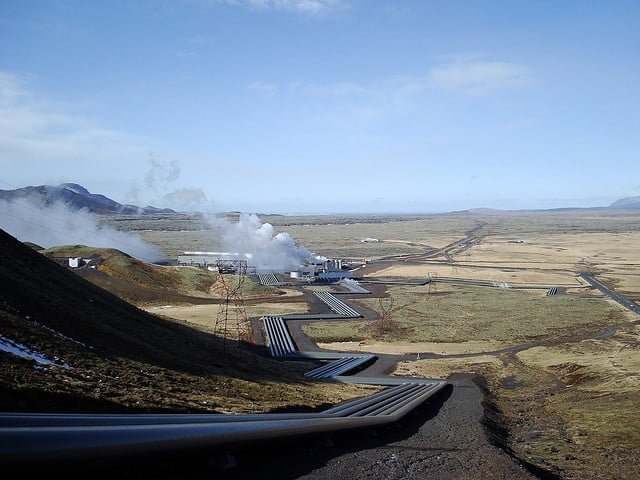Ice and Fire Fuel Icelands Geothermal Future
Iceland is just thata land of ice. Vatnajökull Icecap, in the southeast of Iceland, is one of the largest glaciers in Europe. But underneath all that crystalline water roils boiling rock. Iceland also steams, hisses, and flows with Vulcans power, specifically because the small island country straddles the Mid-Atlantic Ridge, a tectonic landmark of Earth, where the North American and European plates tear apart at 2.5 cm (nearly 1 inch) a year. This tectonic activity causes seismic and volcanic activity, which makes Iceland one of the most volcanic and seismically active places on earth.
Still, there is ice, and there are 300,000 people who live in Iceland
and people need heat
and so the people of Iceland figured out a way to turn Vulcans power into useable energy.
Technically, the country of Iceland is a segment of the Mid-Atlantic Ridge. Everywhere you go, steam vents from fumaroles, mud bubbles upon the surface of the land, and geysers spew hot water and steam toward the sky. All of that activity equates to energywhat is called geothermal energy. Icelanders capture that energy by drilling 3 kilometers (nearly 2 miles) deep into the earth to find pockets of hot water and steam, which they harness as a power source.
In one of six geothermal stations in Iceland, the water and steam are separated. For most of the power plants, the steam is used to power turbines which turn big magnets, which in turn creates electricitypower that is transferred to cities, villages, and individual locations. This geothermal power provides more than half of Icelands energy needs.
The hot water is also used in pipes that run beneath the streets of the countrys bigger cities. The heat from the water keeps the streets clear of ice and snow. The hot water is also used to heat 90% of the homes in Iceland, and allows greenhouses to grow crops that might otherwise be available only if imported.
The Romans knew about steam power two millennia ago, and steam powered the world into the Industrial Age at the turn of the 20th century. Iceland, however, beginning in 1946, forged its way to become the world leader in the methods that make renewable steam power one of the cleanest and most sustainable sources of energy for the future.
From any of our Berjaya Hotels, you are not far away from a geothermal power station, which you can discover and, in some cases, tour. Our Berjaya Hotel in Keflavik is right next door to the Blue Lagoon, the world famous spa which is a result of the adjacent geothermal plant. Our Reykjavik Natura and Reykjavik Marina hotels in Reykjavik are just a short forty minutes from the Blue Lagoon. Cheers!






